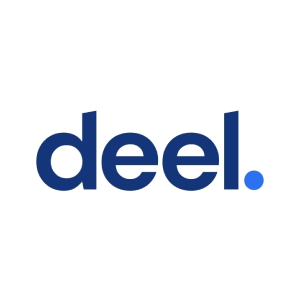Anthony Mironov, CEO of Wingspan, on the convergence in back-office SaaS
 Jan-Erik Asplund
Jan-Erik Asplund

Background
Anthony Mironov is the CEO of Wingspan. We talked to Anthony about the convergence around contractor payroll between Gusto, Rippling, Routable, Ramp and others, the importance of building consumer features and products in B2B back-office SaaS, and the complexity of offering EOR services abroad.
Questions
- You raised a $14M Series A from A16Z in March. Can you say more about the shared vision between Wingspan and Andreessen? What were you both excited about with contractor payroll?
- How critical is it for Wingspan’s vision to have both this great experience for businesses and for contractors?
- Everyone from like Gusto to Rippling to Routable and Ramp is looking to build a ‘super app’ of HR, finance, and back office use cases, including contractor payroll. How do you see this market shaking out—one tool to rule them all or more point solution centric?
- What size of contractor base do the core companies using Wingspan have?
- Do you see Wingspan continuing to focus on that base of customers or do you see it changing?
- Is Wingspan available outside the United States, and can you give us a sense of what it did/would entail for you to expand outside the US?
- How has your vision around Wingspan changed if at all since we last chatted last year?
- There's companies that might be hiring folks as contractors who are employees except for in name. Then there’s the flip, where you might hire a “true” contract designer to work on a project. Do you see both of those types of engagements happening on Wingspan, or do you see predominantly one or the other for companies?
Interview
You raised a $14M Series A from A16Z in March. Can you say more about the shared vision between Wingspan and Andreessen? What were you both excited about with contractor payroll?
Totally. Just as a refresher, today one out of three people in the US workforce are freelancing to some extent. It's supposed to be north of 50% of the population in the next five to 10 years, and there are more freelancers today than there were yesterday. This trend isn't going away, but there's never been any infrastructure built to really support it.
As you guys mentioned, there's $1.4 trillion of payments that are super fragmented across companies, individuals, and contractors. Andreessen thinks big, and even from the first meeting, they really bought into the vision of building the first payroll platform purpose-built for flexible workforces.
We save a ton of time for companies with onboarding, payments, and compliance, and we offer a really simple experience for contractors so they get all of their payment streams in one place. That has been the missing piece.
If you look at traditional HR, all of this work has been traditionally done through a W2 paycheck. As a full-time employee, you sign up on your first day of work; you log into Justworks or whatever system, and you're basically on autopilot. You get paid every two weeks, your taxes are withheld, you have access to benefits and services provided by your company, and you're able to focus on the work.
For the companies that we're working with, they're paying hundreds and thousands of contractors on a monthly basis. Each one of these relationships is extremely important for them because it's part of their operations, but also extremely expensive, both from a software cost and a time cost.
A lot of companies that we're working with have really critical workflows fragmented across their organization. It's usually in the finance, the HR, and the operations departments, and for each incremental person that you hire, you almost have to do a hundred percent of the work each time.
We've created a beautiful system that really helps automate that and orchestrate it. We have this really interesting company and contractor graph that makes onboarding each incremental freelancer much easier because they're already on the platform, they're a first-class entity here, so their profile has already been created, and the time to value is much faster.
How critical is it for Wingspan’s vision to have both this great experience for businesses and for contractors?
It's really important. First of all, from our go-to-market strategy, it's why we win. We're saving significant time and money for companies, and we provide a much better experience for the end contractors. In today's talent war, that's extremely critical. It makes our partners and our customers much more successful, and it makes the contractors much more successful, so they stick around and have a better experience with the companies. From a business perspective, it increases our monetization opportunity.
One really interesting thing that you guys covered as well is that on average, employees change jobs every four years, but contractors can work with 12 or more clients per year. We're actually seeing those network effects compound. Typically, our average contractor is working with three to four clients every three to six months.
Everyone from like Gusto to Rippling to Routable and Ramp is looking to build a ‘super app’ of HR, finance, and back office use cases, including contractor payroll. How do you see this market shaking out—one tool to rule them all or more point solution centric?
Hundreds of companies do bits and pieces of what Wingspan does: for example, there are many ways to send payments. We are the only all-in-one platform linking payroll, benefits, and onboarding for contractors, so Wingspan replaces multiple categories of tools typically used by mid-market businesses.
The contractor use case is very, very different. Rippling has done a really wonderful job and Gusto has done a really wonderful job, but those systems were never really designed to pay thousands of contractors.
We've been really successful because we've taken a different approach focused on workflow automation and orchestration. We understand that our customers use a lot of systems. Wingspan is built API-first and we can ingest a lot of data and push data back, and because we merge payments data and identity data, everything works seamlessly. It depends on which pieces of that workflow you want to have separate. We're not going to build the best e-signature experience, but we have e-signatures in-house, so we can either connect to your e-signatures or have it seamless in our platform. So, we've taken a bundled approach to this problem set, and because of that, we're able to save companies a lot of time and money.
Sorry, I don't think I answered your question actually. We see a world where purpose-built solutions work nicely with other purpose-built solutions. Companies would like to see this in a single pane of glass, and so they need a platform that connects these tools. Do we think that the incumbents like ADP or even the PEOs or ASOs focused on SMBs are going to build all of this workflow automation for the 1099 workforce? They possibly could, but the path that we're taking is actually building first-class integrations with those systems.
What size of contractor base do the core companies using Wingspan have?
Our technology works whether you have one contractor or 10,000 or 100,000 contractors. We started our go-to-market motion really focused on the mid-market businesses that are typically paying hundreds of contractors per month. They might have 5,000, 10,000, 20,000 that are in their network, but they're paying 200 to 1,000 per month, and this is core to their operation. Sometimes they have 50 W-2s, but the operational part of their business is driven through contractors.
These are professional services companies that are providing skilled labor. By professional services, there's legal, there's accounting, there's virtual assistants, health care. We have some gig platforms on our platform as well, but we're really best where there's a lot more workflow. License verification, background checks, e-signatures, all of those things are required as part of the core business and they add up to a lot of administrative burden throughout a few departments across an organization.
Do you see Wingspan continuing to focus on that base of customers or do you see it changing?
We think about this as a phased approach. We started at this mid-market target customer because it's a hair-on-fire problem. It's a really fast sales cycle, we have account execs, and a really fast 45 to 60 days sales cycle. The average selling price for the last 90 days is right around 50K. That sales math works for us today.
As we think about expansion, it's actually using that direct business and going into embedded partnerships. We’re built API-first, and we are already partnering with vertical SaaS platforms and the HR platforms to use our API, so they don't need to rebuild all of these services. We can build a good business selling into SMBs, but we can achieve hyper-growth by providing our services to platforms that are serving SMBs and their end users.
Is Wingspan available outside the United States, and can you give us a sense of what it did/would entail for you to expand outside the US?
We currently have international payment capabilities, so we can pay on local rails and it's really advantageous. SWIFT is really, really expensive. The value proposition again, is saving time and money, so we pay into local bank accounts. We're currently focused on US-domiciled businesses that generally have 80% of their population in the US, and 20% of their contractor population abroad.
At the moment, we don't offer EOR. If somebody's looking for an EOR solution, Deel and Remote are really wonderful, and there's a bunch of players that are really focused on the EOR business. We see those as partnership opportunities for us in the future.
We have a sense of what it would take, but we haven't done as much work as the companies that really specialize in this. It sounds pretty service-heavy, and in terms of a build versus partner approach here, we would prefer to partner. Once you start in Colombia, there's a lot of different countries in South America, and then all of a sudden you have 100 or 200 countries to tackle.
How has your vision around Wingspan changed if at all since we last chatted last year?
We just have more conviction than ever. We're servicing mid market companies up to multinational conglomerates and we’re really focused on this market segment which is the backbone of the US economy. Today there are 10 to 20 million individuals that are working as contractors full-time, and we're doubling down on where we have traction.
We partnered with David Ulevitch at a16z as part of our Series A. He has a huge vision for the company, and he's an operator, so just having him on board and helping us grow the business has been really, really exciting.
There's companies that might be hiring folks as contractors who are employees except for in name. Then there’s the flip, where you might hire a “true” contract designer to work on a project. Do you see both of those types of engagements happening on Wingspan, or do you see predominantly one or the other for companies?
It's a great question. On the one hand, there’s staff augmentation, which is like, "Hey, I need a freelance designer to help our design team."
We’re focused more on companies and agencies that work with an insurance carrier like Allstate or Geico, or they work with one of the large brands like Google or Pepsi, and they're trying to distribute a lot of work.
There's usually a large payer and they're distributing work across hundreds and thousands of contractors. These industries have historically always been 1099s. They've been forgotten about by lots of players in the industry.
I think one major theme here is the lack of a system of record is really blocking enterprises from hiring more contractors, because there's this huge administrative hurdle every single engagement.
By rationalizing the process through workflow automation, Wingspan is freeing up time and effort for the pursuit of real, creative enterprise for both companies and for the contractors. This trend is growing really, really quickly, but if we're successful, we see a lot more companies working with independent contractors in the future.
Disclaimers
This transcript is for information purposes only and does not constitute advice of any type or trade recommendation and should not form the basis of any investment decision. Sacra accepts no liability for the transcript or for any errors, omissions or inaccuracies in respect of it. The views of the experts expressed in the transcript are those of the experts and they are not endorsed by, nor do they represent the opinion of Sacra. Sacra reserves all copyright, intellectual property rights in the transcript. Any modification, copying, displaying, distributing, transmitting, publishing, licensing, creating derivative works from, or selling any transcript is strictly prohibited.








